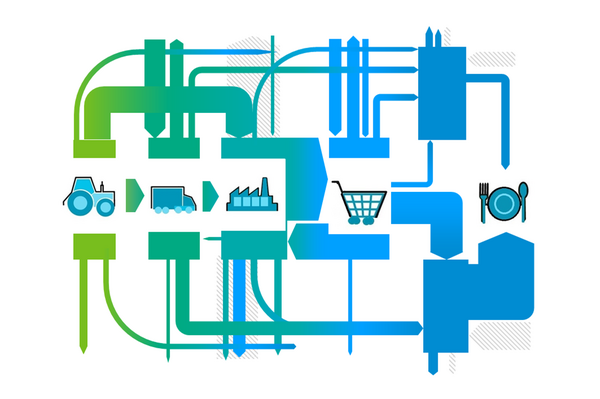Expertise
Food waste as an environmental pollutant
Thomas Schmidt | 21.06.2022
To what extent does German food waste pollute the environment? And how much must greenhouse gases be reduced so that we can meet the United Nations‘ goal of halving the per capita food waste at the retail and consumer levels by 2030?
In order to answer these questions, the Thünen Institute developed an ecological model for the entire German food sector within the framework of the joint project REFOWAS. This model makes it possible to calculate the environmental impacts of various foodstuffs consumed in Germany. The calculation includes the total life cycle of a product, beginning with the raw product production. In addition to domestic products, imported and exported foodstuffs as well as waste in the entire value added chain are considered.
The model comprises twelve product groups which together cover all significant food areas:
- Meat and meat products
- Eggs and egg products
- Milk and dairy products
- Cereals and grain products
- Potatoes and potato products
- Other foodstuffs (such as spices, sauces, etc.)
- Oils and fats
- Sugar and sweets
- Vegetables and vegetable products
- Fruits and fruit products
- Fish and fish products
- Beverages (tap water, soda, coffee, tea, alcoholic beverages, etc.)
The ecological balance model measures the following factors:
- Amount of greenhouse gases emitted per kilogram of a produced foodstuff
- The impacts of German food waste on the environment and
- How a reduction of food waste would affect the environment.
Greenhouse gas emissions per kilogram food
The chart shows all of the greenhouse gas emissions in food production and processing for individual products and sectors. The shown values are related to one kilogram of an agricultural raw product (farm gate), and then for the finished, prepared foods (consumption).
Thus the product group cereals, for example, also contains processed products like bread. Meat production and processing cause high to very high stress for the environment. Many beverages are comprised largely of sugar and/or water, meaning that the original product (for example, pure juices) cause more environmental stress per kilogram than the final product. Potatoes cause relatively little stress in production, but the processing (i.e., frying) has a large impact on the environment.
Impact of the German food consumption on the environment
A total area of 38 million hectares agricultural land is used annually for the production of foodstuffs consumed in Germany. At the same time, the German food sector releases about 177 million tons of CO2-equivalents and requires an energy consumption of 3.7 billion gigajoules for all activities.
Impact of food waste reduction on the environment
Germany has committed itself to reducing half the food waste per capita at the retail and consumer levels by 2030. If this target is achieved, the greenhouse gas emissions could theoretically be reduced by nine percent in comparison to the current level (see the yellow column in the chart above).
A constant level of consumption is assumed in the modelling of reduction scenarios – with all levels of the value production chain featuring a reduced waste level.
The results are in accordance with the largest possible level of savings through avoided food waste. Environmental impacts of the prevention strategies, rebound effects or other methods are not considered here. However, the entire value added chain is considered, from production through processing through to consumption.
The findings from environmental and sustainability assessments are incorporated into our recommendations, which are published in specialist journals (Sustainability article) or self-published documents (Thünen Working Paper 158, English summary).
Based on an approach used by Joint Research Center (JRC) our team developed a sustainability assessment methodology which can be applied to our case studies in relation to food loss and waste as well as other food and nutrition related research questions such as our projects dealing with CO2 footprints in the food chain or Coplant.


![[Translate to English:] Logo des Bundesministerium für Ernährung und Landwirtschaft](/media/allgemein/logos/BMEL_Logo.svg)